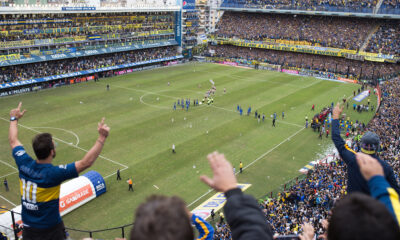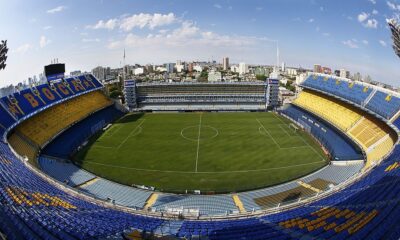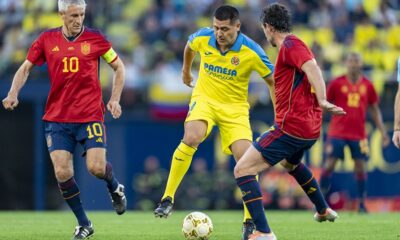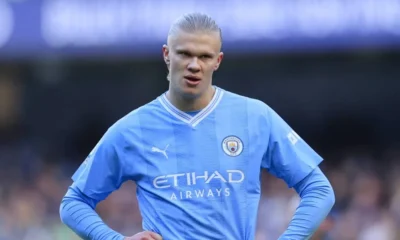Football
Superclásico – Boca Juniors vs. River Plate. How did the world’s greatest football rivalry come about?
Boca Juniors versus River Plate, a derby between two of the most successful teams in Argentina. It is also considered by many to be the derby with the greatest rivalry in the world. The Daily Telegraph named this match as such in 2016, and a year later, the Daily Mirror’s top 50 derbies in the world were won by the Superclásico ahead of El Clásico between Real Madrid and Barcelona.
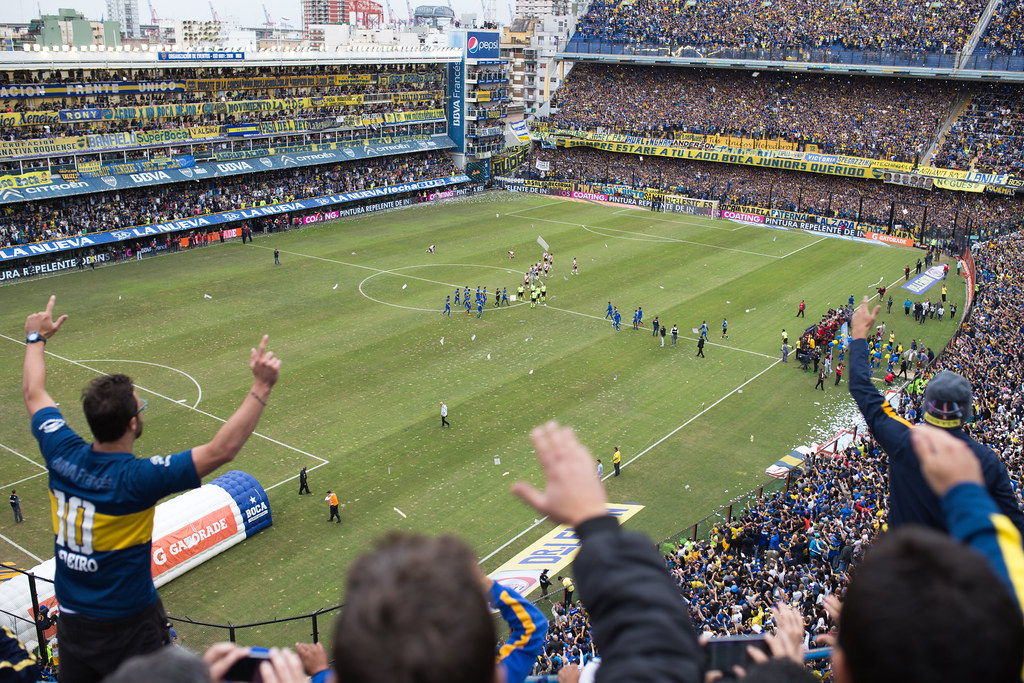
Boca Juniors versus River Plate, a derby between two of the most successful teams in Argentina. It is also considered by many to be the derby with the greatest rivalry in the world. The Daily Telegraph named this match as such in 2016, and a year later, the Daily Mirror’s top 50 derbies in the world were won by the Superclásico ahead of El Clásico between Real Madrid and Barcelona.
For football fans in Argentina, football is a religion. They cannot imagine their lives without it. When their favourite team or national team wins, they cry with joy. When disappointment comes, on the other hand, they can’t stop their tears of sadness. When the Argentine football god Diego Maradona died, for many fans it was as if someone close to their family had died.
That’s how much football means to Argentines. Maradona was an idol to them, especially since he won the World Cup for Argentina. That just goes to show why the Superclásico between Boca Juniors and River Plate is the derby with the biggest rivalry in the world. Because Argentines hate as passionately as they love.
There is an absolutely electrifying atmosphere at every match, whether it is played at La Bombonera (Boca Juniors) or El Monumental (River Plate). In 2004, the English newspaper The Observer put the Superclásico on its list of sports things to do before you die. According to several statistics, the two clubs between them amass 70% of the football fans in Argentina.
The emergence of
Both clubs have their origins in a working-class dock area of Buenos Aires called “La Boca”. River was founded in 1901, Boca in 1905. River subsequently moved to an area called “Núñez,” in the north of the city in 1925. From then on, Boca was considered a working-class club, with many fans coming from the local Italian immigrant community.
River, on the other hand, were nicknamed “Los Millionarios”, as most of their fans were from the upper class. Nowadays, however, both clubs have fans from all social classes.
The first official match took place on 24 August 1913 at Racing Club Stadium, with River winning 2-1 and 7,000 spectators. In the beginning there was no rivalry, it only started later and the fans were a big part of it.
Passionate fans of both Boca and River can really stir up emotions. Both camps have a few taunting chants in their repertoire, often based on the tunes of Argentine rock bands. In the past, matches have often ended in fights between fans or with police.
Boca fans call River supporters “gallinas,” translated “chickens,” because of the alleged lack of courage of River players. River supporters in turn call Boca fans “los chanchitos,” which translates as “little pigs.” This is because they say their stadium is in the part of La Boca that stinks the most.
Although it seems impossible, even in the Superclásico we can find players who have tried on the jerseys of both teams. The first was Cataldo Spitale, who left Boca Juniors in 1933 to join River Plate. Oscar Ruggeri, who transferred from River to Boca in 1985, described the unpleasantness of this transfer.
“It’s not easy, I can tell you that. One side looks at you as a traitor and the other side doesn’t really trust you. You need time to adapt and a really big character to win people over,” Ruggeri described.
The tragedy of Puerta 12
23. in June 1968, the biggest tragedy in the history of Argentine football took place. 71 people were killed in a clash at Puerta 12 (Entrance 12), 150 people were seriously injured. Most of the dead were teenagers and young adults, with the average age of the victims being 12. There are several versions about what exactly happened that day.
Some claim that the clash happened after Boca Juniors fans threw burning River flags from the top of the stadium into the River supporters’ sector, causing a crush of River supporters in the lower sectors.
Others claim it happened after River fans arrived in the Boca sector, causing a crush of visiting fans. Still others claim that Puerta 12 was locked or not opened at the time and that fans in the back did not hear those in the front telling them to stop going in.
William Kent, a former River president, claimed that the culprit was the police, who began repressing Boca fans after they threw urine at them from the stands. Some witnesses claim that the turnstiles to the exit were blocked by a huge iron pillar.
After three years of investigation, no culprit has been found, much to the disappointment of the victims’ families. Since the tragedy, the sectors in El Monumental Stadium have been distinguished by letters instead of numbers.
The duels
Since the beginning of the century, the rivalry has shifted to an even greater degree. Boca knocked out River in the Copa Libertadores (the South American equivalent of the Champions League) in 2000 and 2004, won the title in 2000, 2001 and 2003, and reached the final in 2004.
In 2011, River Plate was relegated from the top competition for the first time, but was back the following year. And in style. Boca was knocked out in the 2014 Copa Americana, in the 2015 Copa Libertadores, in the 2017 Supercopa Argentina, and in the 2018 Copa Libertadores. It has won the trophy of the entire competition almost every time, except in 2019.
During a Copa Libertadores encounter in 2015, River Plate players were attacked at half-time by a Boca fan who pepper sprayed them before the start of the second half. The match was abandoned, River advanced by default, Boca was eliminated from the competition and faced a heavy fine from CONMEBOL.
In 2018, the two teams met in the Copa Libertadores final. However, River fans attacked a bus of Boca players heading to El Monumental and started throwing stones at it. The match was not played, but Boca’s request for River to be disqualified was not granted by CONMEBOL.
The match was eventually moved to Madrid’s Santiago Bernabéu. The first match at La Bombonera ended in a 2-2 draw, but in the rematch River won 3-1 in extra time to win the trophy. Due to the great rivalry and the heated nature of this final, the Superclásico received a huge amount of public attention outside South America. This was helped by the fact that the match was played in Madrid.
Overall, Boca Juniors is better off, having dominated 89 duels to date. River Plate has won 84 matches and drawn 83 times.
Source: Wikipedia, Boca Juniors, River Plate



